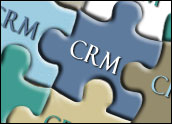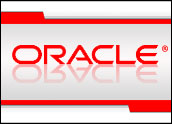
Every tool has a purpose. That’s never more clear than when you see a neophyte do-it-yourselfer trying to use a tool for a purpose other than what it was designed for. For instance, anyone wielding a hammer while trying to fix a car’s engine is probably not going to succeed. I’ve also seen people trying to drive nails with the rubberized handle end of a screwdriver. This was equally unsuccessful.
CRM applications are a little like this. Businesses often make the mistake of thinking that CRM software can be installed and populated with data and then, magically, it can solve all kinds of problems with no effort whatsoever. If you believe that, I would like to talk to you about making a sizable investment in my unicorn ranch.
In reality, CRM is a discipline, and CRM software is the tool you use to scale that discipline up and automate its data management aspects. It’s a tool. Use it right and find success. Use it wrong and you might as well be pounding on your engine block with a hammer.
CRM applications are generally not the sources of the problem — it’s those pesky humans, who have remarkably unfettered imaginations when it comes to finding ways to misuse or underutilize their CRM applications. Here are three recurring misuses of CRM that are head-slappingly common.
1. CRM as Sales Manager Rant Fuel
Sales managers have a tough job. They have to motivate a group of people who often have strong personalities, and they have to communicate a set of sometimes Byzantine information to them — sales contests, territory changes, lead programs, new collateral, and on and on. If anyone needs an assist from CRM, it’s the sales manager. By getting an automated insight into the sales pipeline, he now has the ability to spot who’s performing and who’s not at a speed equal to how quickly his sales staff enters data into CRM.
However, sales managers need to be careful about this. Yes, CRM can provide snapshots of how salespeople are performing, and some salespeople can benefit from blunt words from their managers from time to time. But don’t overdo it. Using data from CRM as a cudgel to beat up on the sales staff is not only unpleasant behavior but also self-defeating. The sales staff will quickly catch on to the source of the manager’s ire, and a natural response is to stop using the CRM system. Why load it up with data so that the manager can then turn around and use that data against you?
This triggers a drop in adoption, and this leads the sales manager back to square one, where he has only a partial idea of what his pipeline looks like. The CRM investment is squandered — at least until you can win the sales staff back — and all the benefits the sales manager gained have been offset by extra work.
2. CRM as the Source of Reports (and Little Else)
CRM’s great at collecting data. Your IT department will tell you that. It can build some very complete customer records, and generate comprehensive reports. But those customer records and reports are simply new ways to increase you intra-office paper costs unless you put them to some use.
Many organizations ensure that data is flowing into the CRM system and is keeping sales organized but fail to make connections to the rest of the organization. Data that could be hugely helpful to support, marketing, and new product creation never makes it to those constituents because the pathway within the company was never built. This is not a technology issue; it’s an organizational issue that leadership needed to tackle at the outset of CRM strategy development.
CRM is often brought in as a way of breaking down silos within organizations, but if you lose sight of this it can become its own silo.
3. CRM as the Jello Mold for Your Business Processes
CRM can automate the things your business needs to do around the capture of customer data, and it can be a big help in automating workflow, delivering reminders, helping with schedules and taking care of many of the mundane aspects of business. It also offers an opportunity to change things that your business doesn’t do well. But if it does it in a way or in a sequence that forces you to modify successful processes to fit the CRM application, you’re doing it wrong.
There’s a word for this: Procrustean, from the myth of the son of Poseidon who invited guests to sleep in a special bed, and then stretched or sliced the guest to fit the bed. You should not stretch, slice, splice or substitute the processes dictated by the CRM application for those that are working well for your organization; that action would be the same as assuming the CRM vendor knew what was best for your business better than you did.
The answer here is to find a flexible CRM application that can mold to your business, not the other way around. With some customization or configuration, the application ought to be able to accommodate the way you work rather than forcing you to change what’s succeeding in your business in order to use the application.






















































